Blog - NOS MARCHÉS - Heating elements control
Heating applications with temperature regulation need high frequency ON/OFF. Therefore Zero cross Solid State Relays are very well adapted for such application.
For the SSR choice, mains voltage, heating power, but also value of the resistance in cold conditions must be taken into account.
Some types of resistances have important difference values between cold and hot conditions.
Standards give for AC-51 loads a reference with a starting current in cold conditions = 1,4 x the nominal current.
The wiring configuration could be :
At the end of life of the heating elements, the load is generally opened. We can detect this problem with our power SSRs with diagnostics. But sometimes resistance becomes in short-circuit : it is necessary to add a correct protection of the system.
The Particularity of this load is that there is no inrush current.

The use of SSRs brings lots of advantages :
–offer long run use as there is no contact moving parts thus less susceptible to wear and tear of the machinery.
–High performance: completely silent and very fast, the SSR does not cause disturbances due to electric arcs.
-It is therefore recommended for applications which require a high response speed and a high switching frequency: this allows very high precision in temperature regulation.
–Mechanical robustness: it is resistant to shocks, vibrations and dust.
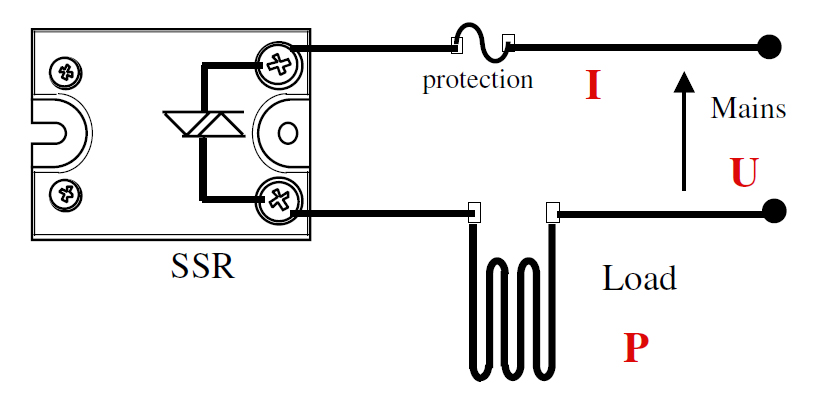
The switching current is calculated according to the following formula:

Current (A) = Power Load (W) / Mains voltage (V)
celduc relais offre une gamme de Relais statiques monophasés optimisés charges résistives AC-51.
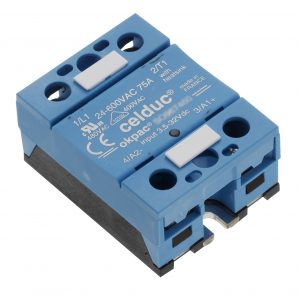
Our SO9 range is perfect for this type of application. They are on/off, zero cross relays.
celduc relais offers also Power SSRs with Diagnostics Features. These relays let the user know the actual status of the load (resistive load), the output of the relay and the network via an NC (Normally Closed) diagnostic contact.
Finally, for smaller ratings loads (<20A), Solid State Relays with Faston terminals are appreciated for their fast connections.
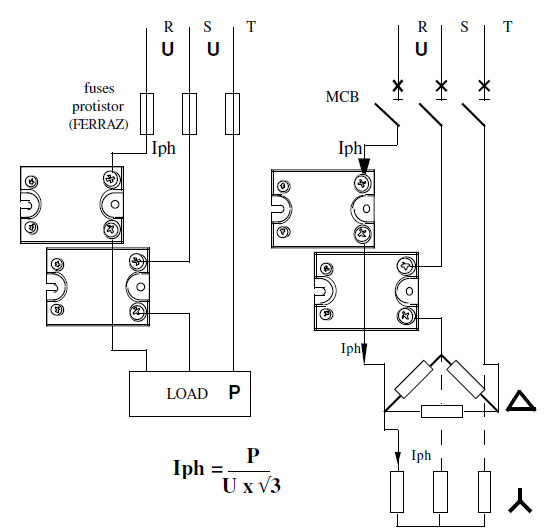
The switching current is calculated according to the following formula:

Current (A) = Power Load (W) / (Mains voltage x square root 3) (V)
With this wiring configuration you can use our range of single phase Solid State Relays.
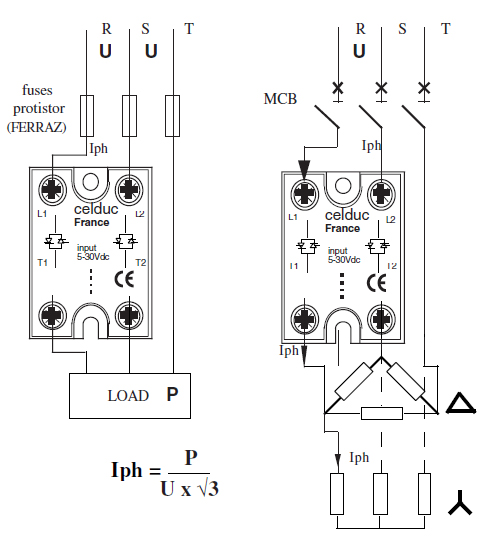
The switching current is calculated according to the following formula:

Current (A) = Power Load (W) / (Mains voltage x square root 3) (V)
Two-phase Solid State Relays for AC-51 resistive loads
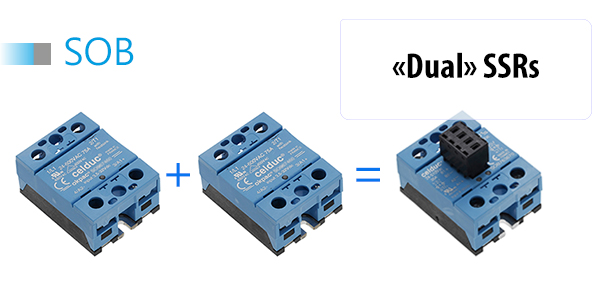
Our two-phase range consists of two solid state relays in a standard compact 45 mm enclosure.
They are ideal for three-phase applications, only breaking two phases.
Why use a two-phase Solid State Relay ?
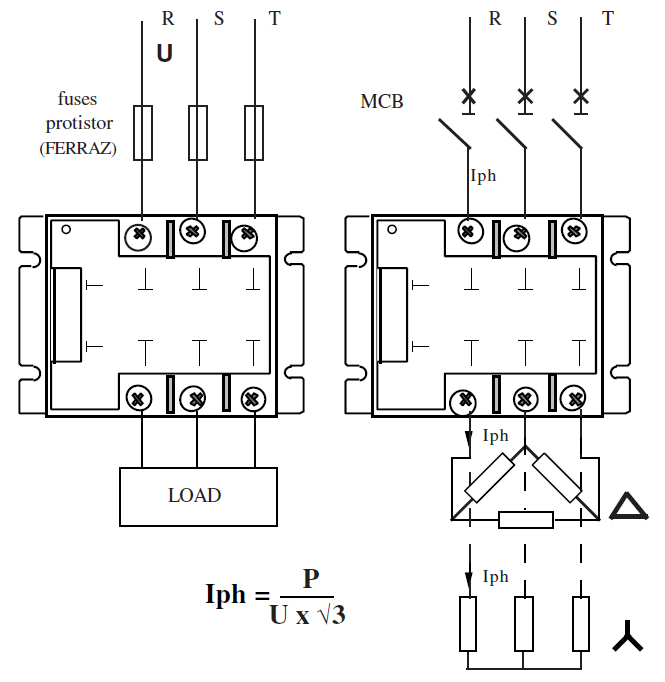
The switching current is calculated according to the following formula:

Current (A) = Power Load (W) / (Mains voltage x square root 3) (V)
We offer a wide range of 3-phase Solid State Relays for controlling three-phase resistive loads.
A number of models are available, with ratings of up to 125 amps per phase, with either an AC or DC input voltage.
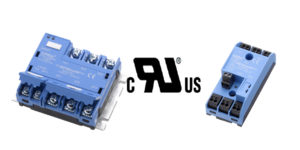
The SGT9 model in the cel3pac® range has been specifically designed to handle resistive loads.
The SGT9 is available with a screw connection or with spring terminals. this range is also available “Ready to use” with integrated heatsink
The sightpac® SMT9 range is ideal for AC-51 resistive loads and is in a standard compact 45 mm enclosure. Our 45mm compact three-phase SSRs is also available mounted on a heatsink.
If you need technical and / or commercial support, please do not hesitate to contact us.